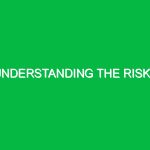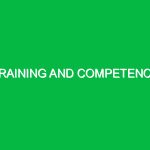In the ever-evolving landscape of the Health Safety and Environment (HSE) domain, understanding and implementing effective risk assessment strategies have become paramount. Whether you’re a seasoned professional or new to the field, grasping the nuances of risk assessment can significantly enhance workplace safety, environmental protection, and overall organizational health. This article delves into the core of risk assessment, offering insights and practical advice to navigate this critical aspect of HSE management.
What is Risk Assessment?
Risk assessment is a systematic process used to identify potential hazards, analyze and evaluate the risks associated with those hazards, and determine appropriate ways to eliminate or control the risks. In the context of HSE, it’s a fundamental tool that helps organizations prevent accidents, occupational illnesses, and environmental harm. By understanding and managing risks, companies can not only ensure compliance with legal requirements but also foster a culture of safety and sustainability.
The Importance of Risk Assessment in HSE
Risk assessment serves as the backbone of effective HSE management. It’s not just about compliance; it’s about creating a safe and healthy workplace that protects employees, the environment, and the community. By identifying potential hazards before they cause harm, organizations can implement preventive measures, reduce the likelihood of accidents, and minimize their impact. This proactive approach not only saves lives but also protects the organization’s reputation and financial stability.
Steps in Conducting a Risk Assessment
Conducting a risk assessment involves several key steps, each critical to ensuring the process’s effectiveness. Let’s break down these steps:
1. Hazard Identification
The first step is to identify potential hazards in the workplace. This could include anything from chemical exposures, machinery, and work processes to ergonomic and psychosocial risks. Engaging employees in this process can provide valuable insights and foster a culture of safety.
2. Risk Analysis and Evaluation
Once hazards are identified, the next step is to analyze the risks associated with them. This involves considering the likelihood of the hazards causing harm and the severity of that harm. The goal is to prioritize risks and focus on the most significant ones.
3. Risk Control Measures
After analyzing and evaluating the risks, the next step is to determine how to eliminate or control them. This could involve engineering controls, administrative controls, safe work practices, or personal protective equipment (PPE). The hierarchy of controls should guide the selection of risk control measures, prioritizing elimination and substitution over protective measures.
4. Implementation and Monitoring
Implementing the chosen control measures is crucial, but it’s equally important to monitor their effectiveness. This involves regular reviews and updates to the risk assessment to ensure that controls remain effective and to identify any new hazards.
5. Documentation and Communication
Documenting the risk assessment process and its outcomes is essential for compliance and for communicating the findings to all stakeholders. Effective communication ensures that everyone understands the risks and the measures in place to control them.
Challenges in Risk Assessment
Despite its importance, risk assessment faces several challenges. These can include limited resources, resistance to change, and the dynamic nature of work environments. Overcoming these challenges requires commitment from all levels of the organization, continuous education, and the integration of risk assessment into the organizational culture.
Best Practices for Effective Risk Assessment
To maximize the effectiveness of risk assessments, organizations should consider the following best practices:
- Engage employees and stakeholders in the process to gain diverse perspectives and foster a culture of safety.
- Use a systematic approach to ensure all potential hazards are identified and assessed.
- Keep records of all risk assessments and control measures to track progress and compliance.
- Regularly review and update risk assessments to reflect changes in the workplace or processes.
- Provide training and resources to those conducting risk assessments to ensure they have the necessary skills and knowledge.
Conclusion: The Role of Risk Assessment in HSE
Risk assessment is an essential component of effective Health Safety and Environment management. By systematically identifying, analyzing, and controlling risks, organizations can protect their employees, the environment, and their bottom line. While challenges exist, adopting best practices and fostering a culture of safety can enhance the effectiveness of risk assessments. Remember, risk assessment is not a one-time task but an ongoing process that plays a crucial role in achieving HSE excellence.
Summary of Key Points
- Risk assessment is a systematic process critical for preventing accidents and environmental harm.
- It involves identifying hazards, analyzing and evaluating risks, determining control measures, implementing and monitoring these measures, and documenting the process.
- Challenges include limited resources and the dynamic nature of work environments, but these can be overcome with commitment and best practices.
- Best practices include engaging stakeholders, using a systematic approach, keeping records, regularly reviewing risk assessments, and providing necessary training.
- Risk assessment is an ongoing process essential for HSE management and organizational safety culture.
By understanding and implementing effective risk assessment strategies, organizations can create safer, healthier, and more sustainable workplaces, contributing positively to their communities and the environment.


